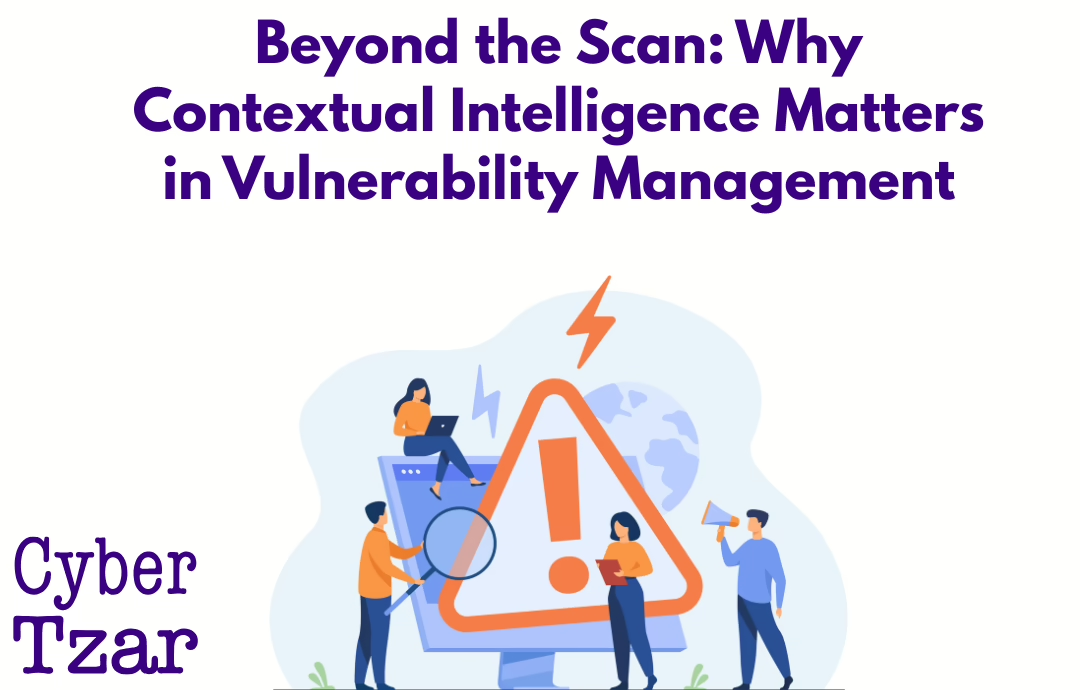Risk isn’t static. It changes with every new CVE, every new phishing campaign, and every new misconfigured server. In a world of sprawling digital estates and ever-evolving threats, the only way to keep pace, let alone stay ahead, is automation at scale.
At Cyber Tzar, we’ve assessed over 130,000 organisations and counting. We’ve scanned infrastructure, web apps, and email configurations. We’ve dug into breach data, sniffed around paste bins, checked S3 buckets, parsed TLS certificates, and mined Companies House records. But none of this means anything unless you can answer a basic question:
“What do I fix first?”
That’s where the Virtuous Triangle comes in, three interlocking disciplines that, when automated and scaled together, produce meaningful, prioritised cyber risk assessments.
1. Vulnerability Assessment: What’s Broken, Misconfigured or Exposed?
Let’s start with the obvious. If your server’s exposing an old version of Apache with known exploits, that’s a problem. If your DNS records are wide open, or your site’s leaking PII, or your login form is vulnerable to injection attacks, you’ve got work to do.
Vulnerability assessments are the raw inventory of what’s wrong, or what could go wrong. At scale, they give you visibility. They tell you:
- What’s misconfigured
- What’s unpatched
- What’s potentially exposed
- What legacy tech you’ve forgotten about
- What default settings are quietly undermining your security
But left on their own, these assessments can be overwhelming. Thousands of alerts, many of them low priority. That’s why we don’t stop there.
2. Threat Intelligence: What’s Being Actively Exploited Right Now
The threat landscape is not theoretical. It’s dynamic, adversarial, and highly opportunistic. Threat actors don’t wait for you to fix your vulnerabilities; they act fast, targeting whatever’s trending, automated, or easy to exploit.
That’s why threat intelligence is the second cornerstone of the triangle. It connects the static to the kinetic. It asks:
- Which CVEs are being exploited in the wild?
- What TTPs (tactics, techniques and procedures) are trending among threat actors?
- Are phishing campaigns actively targeting misconfigured SPF, DKIM, or DMARC?
- Is there chatter about this zero-day on dark web forums?
At Cyber Tzar, we fuse curated intel feeds, OSINT sources, breach data, and automated dark web scraping. We align this threat data with our knowledge of your estate and industry, as context is crucial.
3. Risk Assessment: What Matters Most and Why
Now the final (and most critical) part of the triangle: tying vulnerabilities and threat intel together into risk, real, business-relevant, prioritised risk.
We map each issue to an impact area. We weight it by likelihood, industry sensitivity, data exposure, and attack surface. And we do it fast, automatically, consistently, at scale.
This gives you more than just a list of problems. It gives you a narrative:
- “Your SPF record is misconfigured, which wouldn’t matter, except phishing campaigns targeting your sector are surging, and you’ve had recent breach mentions.”
- “This vulnerable JavaScript library is present on three domains, and threat actors are actively exploiting it to gain persistence via client-side attacks.”
- “You’re hosting open S3 buckets linked to domains tied to legacy apps, and these buckets contain naming patterns that may expose employee PII.”
In other words, we don’t just tell you what’s wrong. We tell you what to do about it, and why it matters.
Why It Works: Automation, Intelligence, Impact
This virtuous triangle works because each part reinforces the others:
- Vulnerability data gives us the what
- Threat intelligence gives us the so what
- Risk assessment gives us the now what
Done right, it lets teams stop firefighting and start managing cyber risk like the strategic function it should be.
This isn’t about buzzwords. It’s about clarity, velocity, and measurable outcomes.
Closing Thoughts
Security teams are under pressure: too much noise, not enough context. Executives want dashboards. Boards want confidence. Regulators want compliance. And attackers want in.
By automating the Virtuous Triangle, vulnerability, threat, and risk, we provide a way to meet all of those demands, without the burnout.
We make risk visible, threats contextual, and action clear.
And that’s how you scale cyber resilience, without losing your mind.

